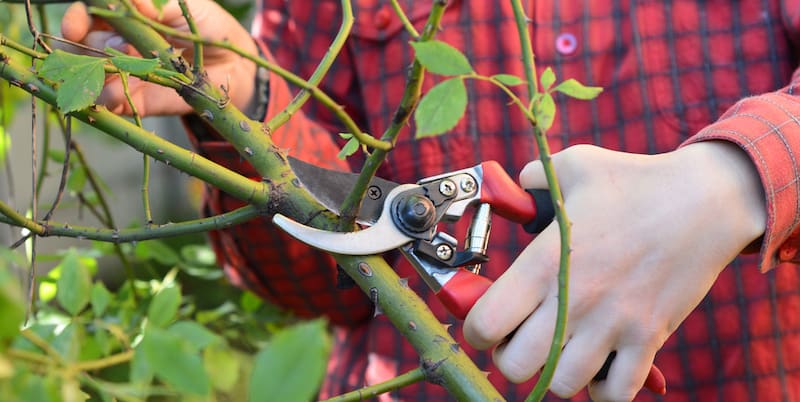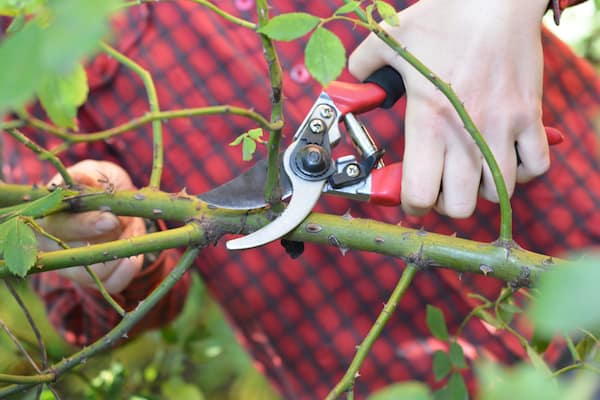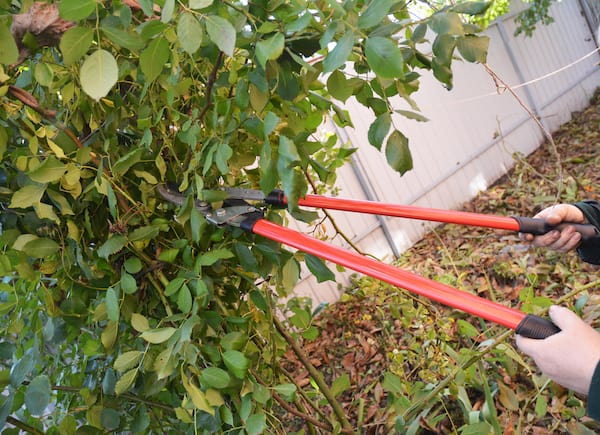
When and how to prune climbing roses to get the best out of them
Our site is reader supported, this means we may earn a small commission from Amazon and other affiliates when you buy through links on our site.
While most roses require only a light pruning, if left alone, climbing roses become a tangled mess of stems and branches without many blooms. Prune climbing roses in the late autumn or early winter, before frost sets in, by cutting off unwanted stems and tying new ones to the support. This enables your climbing rose to grow strongly and healthily and protects young shoots from heavy winds.
Four reasons to prune climbing roses
- To train young climbing roses up the support.
- Routine annual pruning to control the shape and encourage new growth.
- To remove any dead or diseased parts of the rose plant.
- To get overgrown climbing roses back in shape.
When to prune climbing roses
Climbing roses need annual pruning in the later autumn and early winter. You should do this before the hard frosts set in. This is generally in December through to February, but definitely wait until all the flowers have faded.
But check your climbing rose in the autumn. If it has long whippy climbing stems whipping around, prune them back by a third before the winter or tie them up. You don’t want these stems moving around in the winter winds.
And periodically check your climbing rose for dead and diseased stems. If you notice any, prune them off immediately, regardless of the time of year. If you have an issue with Black spot a common rose disease, this guide will be helpful.
How to prune a climbing roses
Pruning and training young plants
Unfortunately, climbing roses don’t cling by themselves to supports like clematis and some other climbers. You need to tie the shoots to a support of horizontal wires or to a trellis. I have a guide about this. If you need to know how to do this, check out my guide How to train climbing roses.
For pruning these new climbing roses, prune the tips of the shoots to the first strong bud to encourage side shoots to develop. Otherwise, leave everything alone after you’ve wired the plant to the support framework. I sometimes snip the top of the main shoot to encourage the side shoots if not many have developed.
But, as always, remove any diseased, damaged or dead growth immediately after you find it. Also, if some growth is turning out spindly, feel free to cut that back as well.
Regular annual pruning
Remove all damaged or diseased or dying parts of the plant. Make sure to sterilise your cutting tool in between cuts to save from spreading any diseases around. You can also choose to cut away any weak shoots that look as if they’ll never be strong.
Tie any new shoots into the framework that can fill gaps in it. Be selective and only use strong shoots. You can cut older woodier stems out of the way to make room for the new and healthier shoots. Your option is to cut these older branches down to the base to encourage new growth.
If you have side shoots that are flowering, prune them back to about one-third of their length.
Getting overgrown climbing roses back in control
If you’re faced with a tangled mess of stems, branches and some flowers, start by looking for stuff you can cut away. Dead and diseased parts of the plant are right up there (with a sterilised cutting tool). Cut out weak shoots as you probably have more than enough strong ones.
Look in the centre of the climbing plant and cut out any older woody stems. Check also for any branches that are crossing each other or rubbing up against others. Take these out to open up the plant for better air circulation. Cut these branches and stems back to the base of the plant to encourage new growth.
If your rose plant is still a mess, look carefully at its shape and choose some strong stems to cut away. The aim is to end up with a climbing rose that is in good shape and covers the framework. To get this you may have to sacrifice some healthy stems and shoots.
You can encourage your climbing rose plant to branch out to the sides if you have room left in its framework. Shorten the side shoots on the remaining branches and prune back the tips by one-half. This encourages it to branch out.
If you rejuvenate an old climbing rose, I always try to aim to leave around 5-6 strong stems from the base and cut the rest away.
Tip
Next spring, boost your pruned roses by spreading a rose fertiliser over the soil and giving them a 5cm layer of garden compost or manure.
To learn more about how to grow and care for roses I have a dedicated guide here. A problem i have seen on a few occasions now is the leaves being stripped and left like skeletons. This is probably the rose sawfly which you can read about here.

